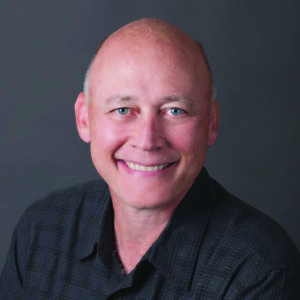
By Chris Hauck, Founder and President HauckEye, Longmont, Colorado, chris@hauckeye.com
Ethnographic research is a valued method for collecting rich, deep insights that come from observed behavior rather than reported behavior. The technique is focused on observing as the respondent participates in their natural environment, interacting with their environment in such a way as to mimic a natural interaction while the researcher observes their reactions. The benefit of this exploration is the discovery of aspects of the experience that impact the overall customer experience. The findings are much richer, deeper, and more natural. As a researcher, I can temporarily forget about the logistics of collecting data during a live activity and settle into my own real-time observations that will be deepened when I review the recordings.
By leveraging everyday technologies and a little planning with my videographer, we have learned how to record unobtrusively in diverse locations, such as restaurants, stores, and workplaces. With these immersive ethnographic projects that diminish the cues that constantly remind participants that we are conducting research, I have helped clients address various business problems (e.g., how to improve their processes, better appreciate the hurdles on customers’ paths to purchase, and produce effective communications to improve the customer experience).
 In this approach, the participant knows that we are recording, but the equipment is hidden from everyone to maintain a natural environment. Hiding the recording process from nonparticipants who are simply working to care for the participant’s needs places them in their natural environment without feeling the need to perform at a level expected from someone being watched. The characters in this theater have no idea there’s an audience, so they act as they normally do. They don’t perform for the camera. This design allows me to ask the participant about things as they are happening in real time and to truly understand their experience. This less intrusive approach has allowed me to experience events with the participant and to ask questions as the experience unfolds. I eat with them, shop with them, get their cars serviced with them, buy light bulbs with them, and choose features for the next generation of blood gas analyzers with lab directors. I experience their experience in real time and gain a much deeper understanding of their perspective.
In this approach, the participant knows that we are recording, but the equipment is hidden from everyone to maintain a natural environment. Hiding the recording process from nonparticipants who are simply working to care for the participant’s needs places them in their natural environment without feeling the need to perform at a level expected from someone being watched. The characters in this theater have no idea there’s an audience, so they act as they normally do. They don’t perform for the camera. This design allows me to ask the participant about things as they are happening in real time and to truly understand their experience. This less intrusive approach has allowed me to experience events with the participant and to ask questions as the experience unfolds. I eat with them, shop with them, get their cars serviced with them, buy light bulbs with them, and choose features for the next generation of blood gas analyzers with lab directors. I experience their experience in real time and gain a much deeper understanding of their perspective.
Confidentiality and Ethical Considerations
Let’s discuss the ethical considerations everyone rightly brings up about this kind of study. The research always needs to meet ethical standards. When shaping an ethno project for which the audio and video recordings are hidden, participants need to know that we are recording, even if the recording instruments are out of sight. Always have your participating respondents sign a use waiver. My use waiver specifies that the research will not be used outside of the client company, specifically so that the respondent doesn’t perform for the camera. However, you do not want to tell nonparticipants in the surrounding area about the research because the goal is to retain the naturalness of the setting as much as possible. As long as the working staff are not personally identified in any recording to be viewed by the client, you aren’t in an ethically or legally compromised position. Carefully edit the videos to avoid ethical or legal dilemmas.
Working through an Ethnographic Case Study
I came up with this idea by accident, like a lot of good ideas. I had just started a project for a major restaurant chain in which the client’s objective was to convert occasional customers to regular customers. They wanted to really understand the decision-making process to choose a restaurant and how to establish an advantage for their brand. We wanted to develop an understanding of the experience from the initial point of considering going to a fast-casual restaurant as a possibility, to the end of their experience, which often included paying for their meal, wrapping up their leftovers, and getting out of the parking lot. Because the decision begins well before arriving at the restaurant, we started with people who go to restaurants, whether alone or in a group, and interviewed them in the environment where they are making this decision. After the initial interview at work or at home, we followed them to their chosen restaurant to have the full experience. I originally intended to simply audio record our time in the restaurants, but as I talked with the client, I realized that having video would significantly enhance the communications of our findings.
In terms of the basics, most of the participant interactions start with a recruited group at their premises, whether the participants are a group of Microsoft engineers in their conference room or a family of seven in their living room. I interview them in their space to experience their decision-making process. How do they make the decision to go to a fast-casual restaurant? How do they choose the specific restaurant to go to? What other options are in their consideration set and why? Specific to work groups, anyone who has gone to lunch with a work group knows how time-consuming and excruciating this decision can be. Meeting everyone’s needs is a real challenge. Once my initial interview with the group is concluded, the video team sets up the participants and the moderator with their microphones, and we all regroup at the location of their choice.
One of the benefits of our hidden equipment approach is that we can take our participant group to any restaurant, even a competing brand. Asking permission to conduct the research from the competitive brands was not an option, as they would simply say, “No, thank you.” In some cases, that would even have been a challenge with the client’s location managers since they aren’t fans of anything that might impact their revenue for the night.
We really don’t want the camera, microphones, or monitor to be noticed by anyone, but at the same time, we need each of these components. There is a considerable amount of ambient noise to deal with. We need to make sure everything works properly when recording the session.
We also need to include the participants but really don’t want to get the faces of the staff. Rich Wallin of W2 Films and his team noodled the requirements with me over drinks on our first night in the field. Their brilliant idea, which we practiced in the bar over our drinks, turned out to be surprisingly easy. Let’s prop Rich’s iPhone (the camera) up so that it catches the table. We’ll black out the screen and turn off the phone to turn it into a simple video camera. It naturally looks like someone’s phone is on the table, ready for that important call that, in our case, will not happen. Let’s use a couple of AirPods (the microphones) in the ears of the participants who have enough hair to hide them subtly. Rich can connect them all and monitor everything on his iWatch (the monitor). Brilliantly, it all worked like a charm. The participants spoke and acted freely, and everyone, including me, forgot about the camera and had a good time—all while collecting information and developing insights very differently from past ethnography projects under these conditions. In the past, this project would have been heavy in audio but would not have included any video. Communicating the results using video makes all the difference in explaining complex human attitudes and behaviors for busy company executives who rarely see their customers interacting with their business in their natural environment. They get to see the video as part of an unfolding story about their businesses rather than reading findings from a report.
Our fast-casual dining research included a large number of diverse and interesting groups. We often looked like an odd gathering, no matter what restaurant we were in. For instance, a trio of middle-aged white men (me, Rich, and our client) out to lunch in Seattle with an international team of software engineers, mostly from Asia, a group of kindergarten teachers out for a happy hour (surprised we survived that one), a group of all-women admissions office staff of a church-based college in Indianapolis for a nice ladylike “froufrou” lunch, and even with a couple of very flamboyant, young, transgender, exotic dancers for a late night drink. You must be very strategic in the way you organize the group at the table, mixing the corporate-looking guys in with the “real” people, so it is less noticeable to others in the restaurant. In the end, no one seemed to notice, and no one really seemed to care.
In that initial restaurant study, insights around improving the experience and the process came from many diverse sources. Some of my favorites were around meeting the needs of the youngest guests so that their parents could enjoy their meals. In Africa and in Asia, it’s common for the restaurant staff to take the kids of their most favored guests and entertain them while the adults have dinner. While you can’t do that in the U.S., our research allowed us to explore delivering a similar experience at the table through entertainment and choices that mimic that experience for the parents. Another critical learning in this project came from the experiences with the Microsoft engineers because of their time limitations for lunch. As we had plenty of free time during the lunch ethno experience, the engineers gleefully brainstormed how the client could use technology to speed up the process. We were able to develop alternatives to the traditional lunch approach and find ways to deliver a much faster, more convenient lunch experience, which allowed our client’s chain to develop a viable approach for the quick lunch segment. These learnings, and many more, were experienced in the restaurant with each group, then discussed at the table, and solutions were proposed in real time while enjoying our meals.
I’ve repeated the basics of the process for a wide variety of research questions. The results are always surprising and very enlightening. Having these experiences has produced a considerable number of product or process improvements that have a real impact on clients. In my first project, our final presentation included more than 80 improvements, some very minor and some really significant. The best part is watching company executives see the customer experience through video. I often find that my clients’ executives believe they understand their customers’ experience based on their own family and friends’ experiences. But this form of knowledge is highly biased; cleansed for their consumption to either protect their egos or to maintain their relationship with the informer. Seeing and hearing a real ethnography experience is often shocking and simultaneously very enlightening for clients.
“Having these experiences has produced a considerable number of product or process improvements that have a real impact on their business. In my first project, our final presentation included more than 80 improvements, some very minor and some really significant.”
Interested in More Qual Tools for Your Toolbox?
Check out this webinar on the Blob Tree, a frequently used projective exercise in qualitative research. Qual researchers love using projective techniques » Learn More Now





